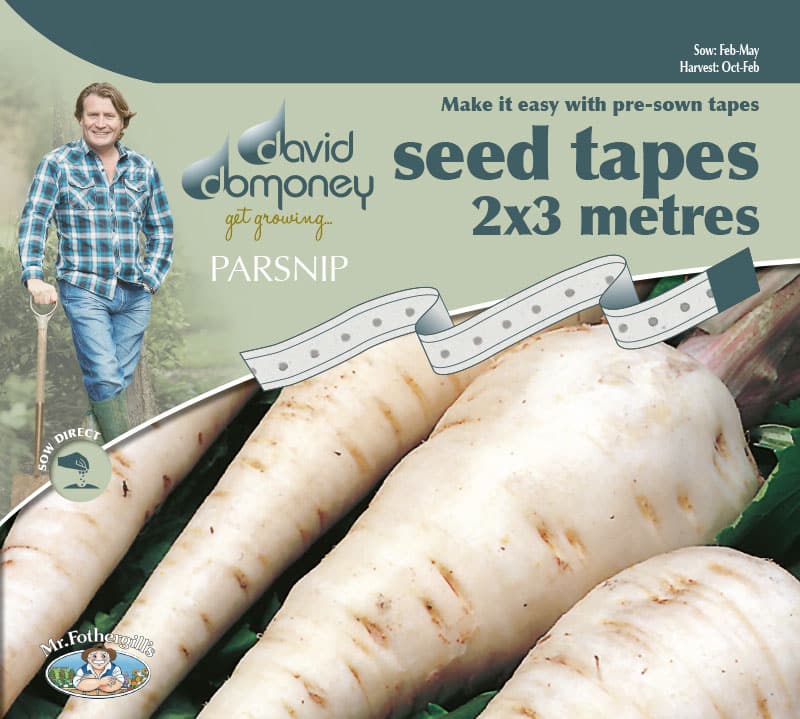Parsnip
Parsnip White Gem Seed Tape
A classic and still very popular variety which is much loved for its excellent reliability and great flavour. The conical roots have broad shoulders and are a little shorter than some other varieties making them easier to harvest, especially in heavy clay soils and during periods of hard frost. These seeds are pre-sown on a biodegradable seed tape, making sowing quick and efficient and reducing thinning out later on.
Growing Advice

Sow Indoors
Parsnips should be sown outdoors, directly where they are to grow.
Sow Outdoors
Sow outdoors February to May. Make narrow trenches 1.5cm deep and spaced 40cm apart. Separate and unroll the seed tape and place in the trench. Place soil or a stone on one end and gently pull the tape straight, then carefully cover with fine soil. Keep the soil moist and weed free at all times. Seedlings should start to appear after approximately 14-32 days. If seedlings do happen to get overcrowded then thin the crop as it grows by taking alternate plants from the row. It is good practice to water well after thinning out, to wash any dislodged soil back around the roots of the remaining plants.
Top Tips About Seeds
Parsnip seeds are best used fresh so it is best to sow all the seed tape in the packet in one season.
Growing in Containers
Parsnips, due to their large size and slow growth are not well suited to patio pots or containers.
Common Problems
Water thoroughly once a week during particularly hot and dry spells as this will help the roots swell. Carrot fly is the most common pest and if it becomes a problem can be prevented by growing plants under a fine insect netting and delaying sowing until May. Also, try growing spring onions between the rows, this has been been proven to deter carrot root fly, or at least mask the scent of the parsnip roots.
Harvest
Harvest from October to February. If the roots lift easily then harvest alternate roots from the row, leaving more space for the remainder to grow on. On heavier soils it may be necessary to lift sections of the row with a garden fork. In both instances water the remaining roots well afterwards to replace any dislodged soil.
Ideas on how to use your Parsnip
Keep the soil moist as the seeds are germinating, if it dries out completely it can set them back. Parsnips freeze well so chop up any surplus and freeze for later use. To make best use of garden space it is generally a good idea to sow fast growing crops like radishes or salad leaves between the rows of slow growing crops like parsnips.

